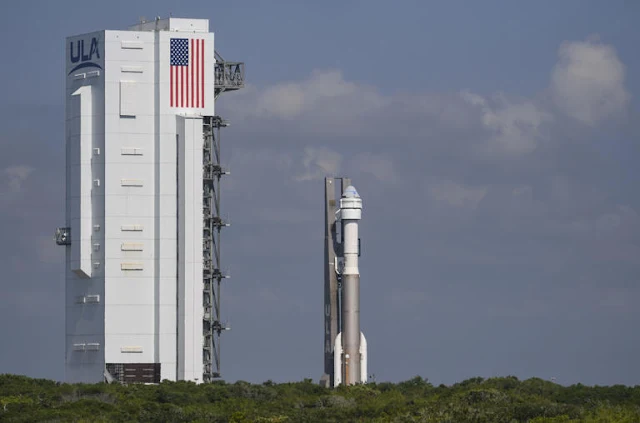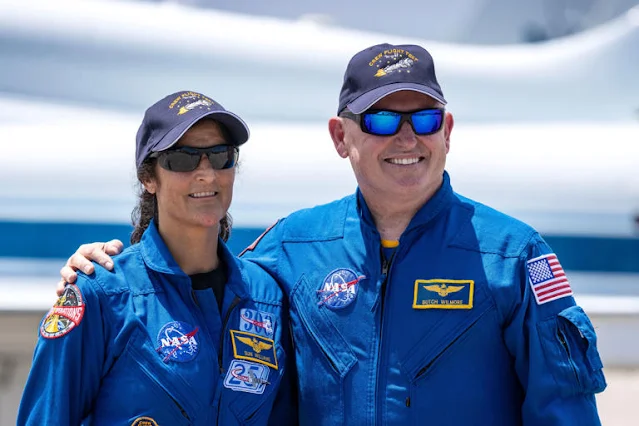Here's a revised version of the content:
"Prior to a door-sized panel blowing out of a Boeing 737 Max, causing a significant hole in an Alaska Airlines aircraft shortly after takeoff, and before whistleblowers alleged threats for raising safety concerns within the company, Boeing faced challenges with its Starliner spacecraft. This spacecraft, designed to ferry astronauts to orbit under a $4.2 billion NASA contract, encountered delays due to a series of setbacks.
During initial test flights, the Starliner experienced various issues. Its onboard computer failed, the second test flight was canceled due to valve problems in the service module, and flammable tape used as insulation inside the capsule had to be replaced. Additionally, the parachute system required a redesign to strengthen the link between the parachutes and the spacecraft.
A decade after Boeing was awarded the contract to transport astronauts to the International Space Station, the company is preparing for its first crewed mission. Scheduled for 10:34 p.m. on Monday, veteran astronauts Sunita Williams and Barry “Butch” Wilmore are set to fly on a critical mission for Boeing's space division and NASA. The mission aims to evaluate the spacecraft's performance with a crew onboard, including manual flying tests before autonomous docking with the station. NASA and Boeing will closely monitor the spacecraft’s heat shield and parachutes during the astronauts' return to Earth after about eight days.
NASA officials have expressed confidence in Boeing, highlighting the company's thorough preparations for a successful mission. They emphasize the importance of safety, especially considering the risks involved in launching humans into orbit on a new spacecraft with a history of issues and no prior crewed missions.
Boeing's recent leadership reshuffle and the replacement of CEO David Calhoun following the panel incident further underscore the importance of a successful Starliner mission. Despite challenges faced by Boeing's commercial aviation and space divisions, NASA remains optimistic about the upcoming mission, highlighting the rigorous preparations and safety measures in place.
The delays and challenges with the Starliner program have not only led to significant cost overruns but also raised questions about its future. While Boeing intends to fulfill its contract with NASA for a few more missions, the long-term prospects of the program remain uncertain.
Despite the past setbacks, both Boeing and NASA are optimistic about the upcoming crewed flight test, viewing it as a crucial step towards ensuring the safety and reliability of the Starliner spacecraft for future missions."


